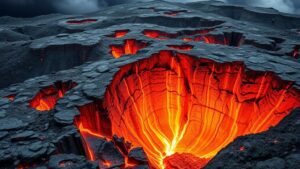Working Small Tributaries for Hidden Gold Deposits
Working Small Tributaries for Hidden Gold Deposits
Gold mining has historically focused on large rivers and primary deposits; however, small tributaries often house untapped gold resources. Understanding the dynamics that govern these smaller watercourses can lead to successful gold recovery. This article explores techniques for working tributaries, the geological factors influencing gold deposition, and practical steps to maximize results.
The Importance of Small Tributaries
Small tributaries, often overlooked, can be rich in gold due to various geological processes. e smaller waterways can accumulate gold particles transported from larger rivers and primary deposits. A study conducted by the United States Geological Survey (USGS) highlighted that 15-20% of gold in a watershed can be found in smaller tributaries, suggesting their potential for gold recovery.
Geological Factors Affecting Gold Deposition
Understanding the geological characteristics of small tributaries is crucial for successful gold prospecting. Several factors come into play:
- Stream Bed Composition: The bed material of tributaries can influence where gold settles. Fine gravels, sands, and clay can trap heavier minerals like gold.
- Flow Velocity: Slower water flow allows heavier materials to settle. Tributaries with fluctuating currents can also create deposition zones.
- Topography: The slope and depth of the stream can create natural traps for gold deposits.
Techniques for Gold Recovery
To successfully extract gold from small tributaries, various methods can be employed:
- Panning: This traditional method is effective in small water courses. Use a pan to separate gold from sediment, focusing on areas with visible black sand.
- Sluicing: A sluice box can enhance the recovery process by allowing for continuous operation. Install the sluice in zones of slowed water flow to capture gold effectively.
- Highbanking: This method involves a portable sluicing set-up above the water, processing material from the banks of the tributary.
Considerations and Challenges
While prospecting in small tributaries can be rewarding, there are considerations to keep in mind:
- Environmental Regulations: Always check local regulations regarding mining, as many areas have strict rules to protect ecosystems.
- Accessibility: Small tributaries may be difficult to reach, requiring careful planning for equipment transport.
- Seasonal Changes: Flow levels can vary significantly with the seasons, impacting potential gold recovery. Spring thaw and rainy seasons may introduce higher flows, while summer can lead to shallower conditions.
Case Studies
Several case studies illustrate the potential of small tributaries:
- Pine Creek, California: Miners working in a 1-mile stretch of this small tributary found significant deposits of placer gold, leading to a gold rush in the early 1980s. Many small tributaries surrounding the creek are still being explored.
- Hannah Fork, New Hampshire: During the summer of 2015, local prospectors discovered gold deposits in a tributary that previously went unexamined, resulting in successful extraction efforts over a two-year period.
Actionable Takeaways
To effectively work small tributaries for gold recovery, consider the following steps:
- Conduct thorough research on the tributarys geological characteristics and historical yields.
- Use effective recovery techniques like panning, sluicing, and highbanking as appropriate for the site.
- Stay informed of any environmental regulations affecting gold prospecting in your area.
Exploring small tributaries can unveil hidden gold deposits that, with the right approach, can lead to successful recovery outcomes. By understanding the terrain, employing appropriate techniques, and navigating the challenges thoughtfully, prospectors can capitalize on these often-ignored waterways.
